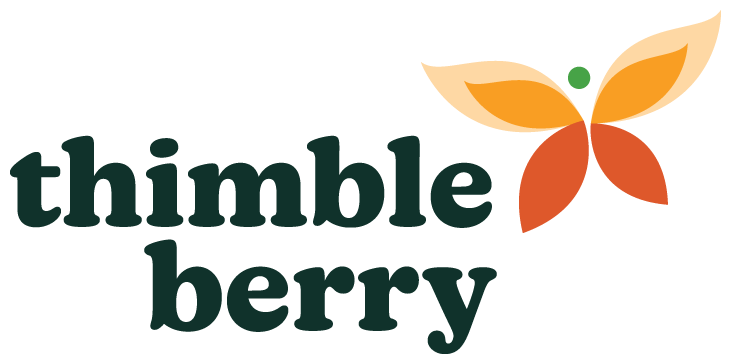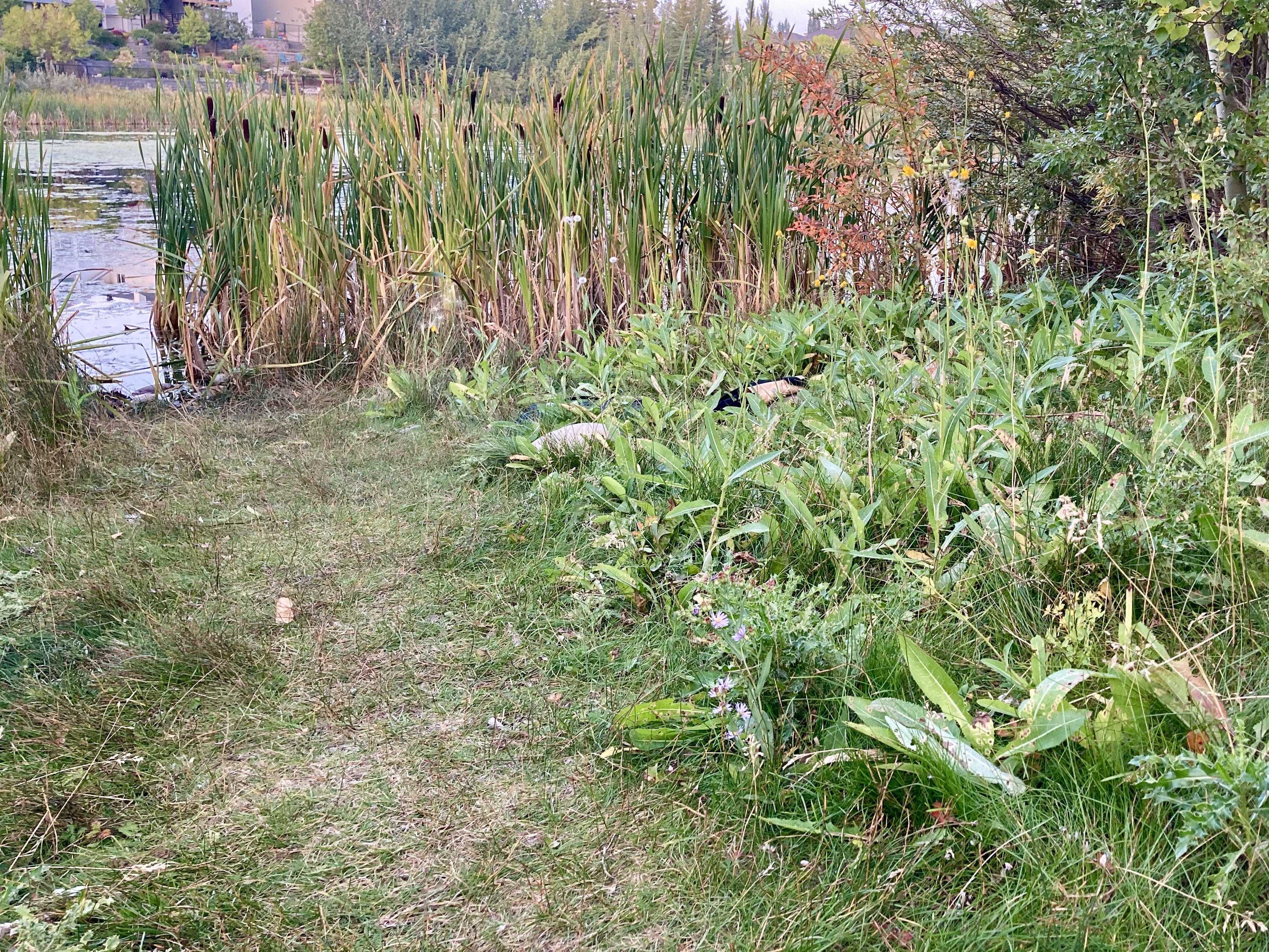
As a requirement for an ecopsychology course in my MA program at Royal Roads University, I began my own place bonding practice in July of 2020. I was drawn to my own special spot on the edge of a stormwater pond in my Calgary neighbourhood, about a five-minute walk from my home. I sat daily for nearly an hour at a time, all through the summer: simply taking in the sights and sounds, and then reflecting in my journal. My own connection to this place and its inhabitants grew as the weeks wore on. Taking the time out of my usual routines to connect and reflect proved invaluable to me; I committed to continuing this practice throughout the school year and incorporated it into the methodology for my Master’s research project.

With only a couple of exceptions, I have gone to my sit spot every other day since July of 2020. I have sat in the sun, the wind, the rain, the fog, and the snow. I have watched the trembling aspen and poplar leaves turn from green to gold and then carpet the ground. I was there to welcome the sun and to watch it set. I was often the first (human) to arrive after a fresh blanket of snow fell and loved seeing traces of hoof, paw, and bird prints telling a story I would otherwise have missed. I said good-bye to the summer sparrows, ducks, and geese as the pond froze over and winter set in in earnest. The days grew noticeably shorter. My constant companions were the cheerful chickadees, boisterous magpies, and ever-singing finches. I loved watching the raucous ravens croak and roll overhead on their way to or from their mountain roosts.

With the new year came a new infusion of light. Days once again grew longer. The pond stayed frozen and the birds familiar. The winter felt long but there was a constancy and familiarity to this experience that kept me coming. Those cattails that I had seen weather so much over this COVID winter were still standing – proud yet worn. Every day here. Every time welcoming me with their presence.
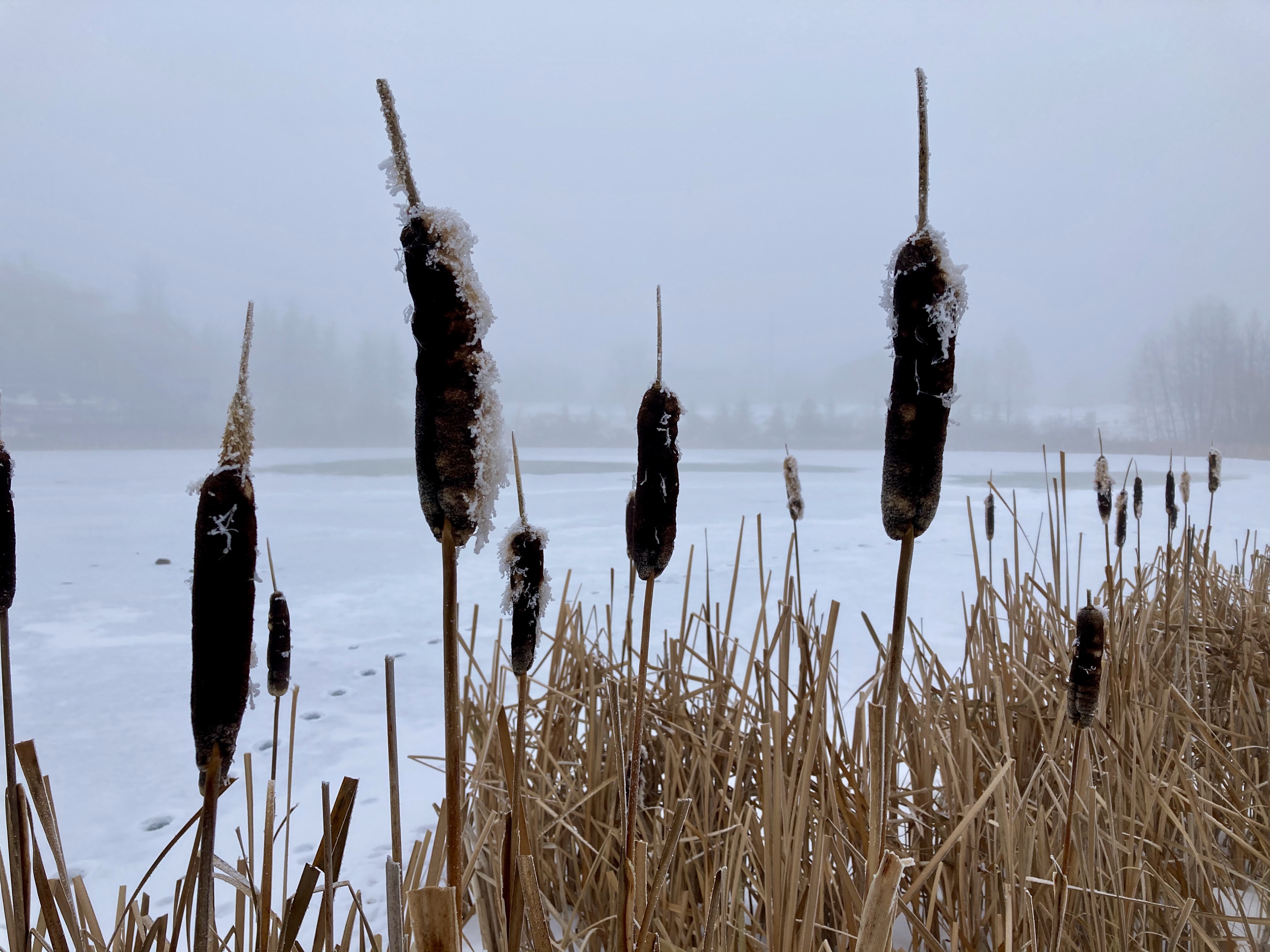
Being connected, in this way, to the rhythms and cycles of the world, invited me to reflect on my own experience. What could I learn from the way the world rests in winter? What did my reflections on the life cycle of these cattails, or a butterfly teach me about what it takes to transform? When I grew frustrated and even demoralized with my own research, I began to see how discomfort is part of the process of learning and creating. That by being willing to stick with it, in spite of the discouragement, I was able to break through. And this wasn’t a one-time experience. The breakthroughs didn’t always last long before another round of discouragement would come. Instead of walking away and giving up, as might have been my habit before, I stuck with it. I saw value in the difficulties. I thought of the bulbs I planted in fall and how they need the darkness of winter to emerge in the spring. The caterpillar cannot become butterfly without the difficulty of the chrysalis. I couldn’t hope to create something of value without also navigating and honouring the disorienting and difficult steps along the way.
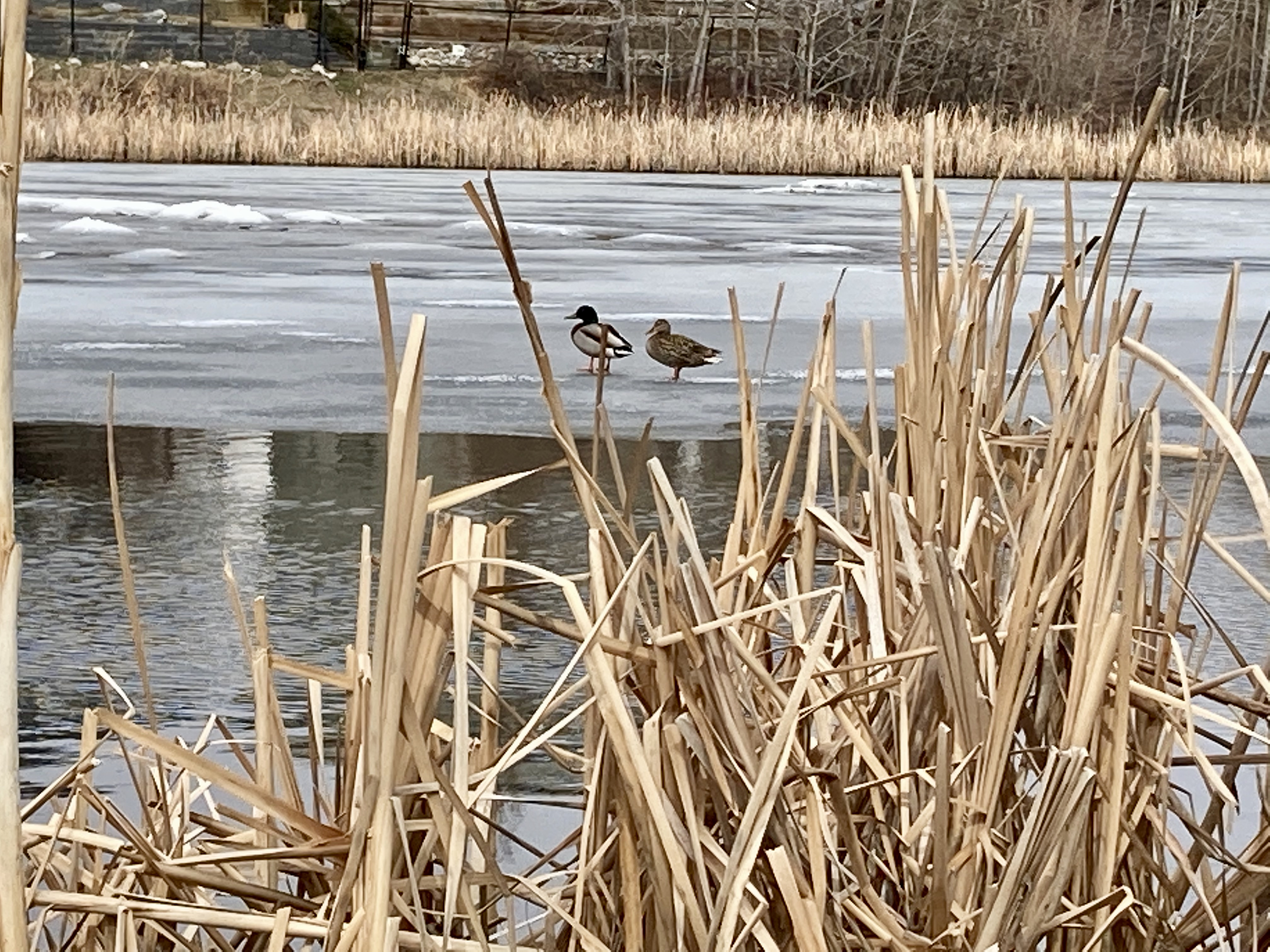
Finally, the first robin of spring. The sun’s rays extending from higher in the sky lapping up the receding snow. The geese and ducks returned, flying low, scoping out the best nesting spots. Catkins began to unfurl from aspen buds, forming pussy-willow-like nubs to adorn their branches. And this is Calgary after all, spring doesn’t mean an absence of cold and snow. I sat in the cold, wet spring winds, waiting for the pond to melt and for the sparrows to return. The red-winged blackbirds came back, noisily jostling for territory, making their presence known. The returning ducks, grebes, and sparrows seemed like old friends I had missed over the winter. The soundscape of spring filled my senses with a feeling of abundance and awe. Slowly, new shoots emerged amongst the withered cattails as coots built their nests underneath. The swallows once again swooped high over the pond, filling themselves with the wealth of spring insects. Sections of grass were covered in yellow buffalo bean and early purple violets.
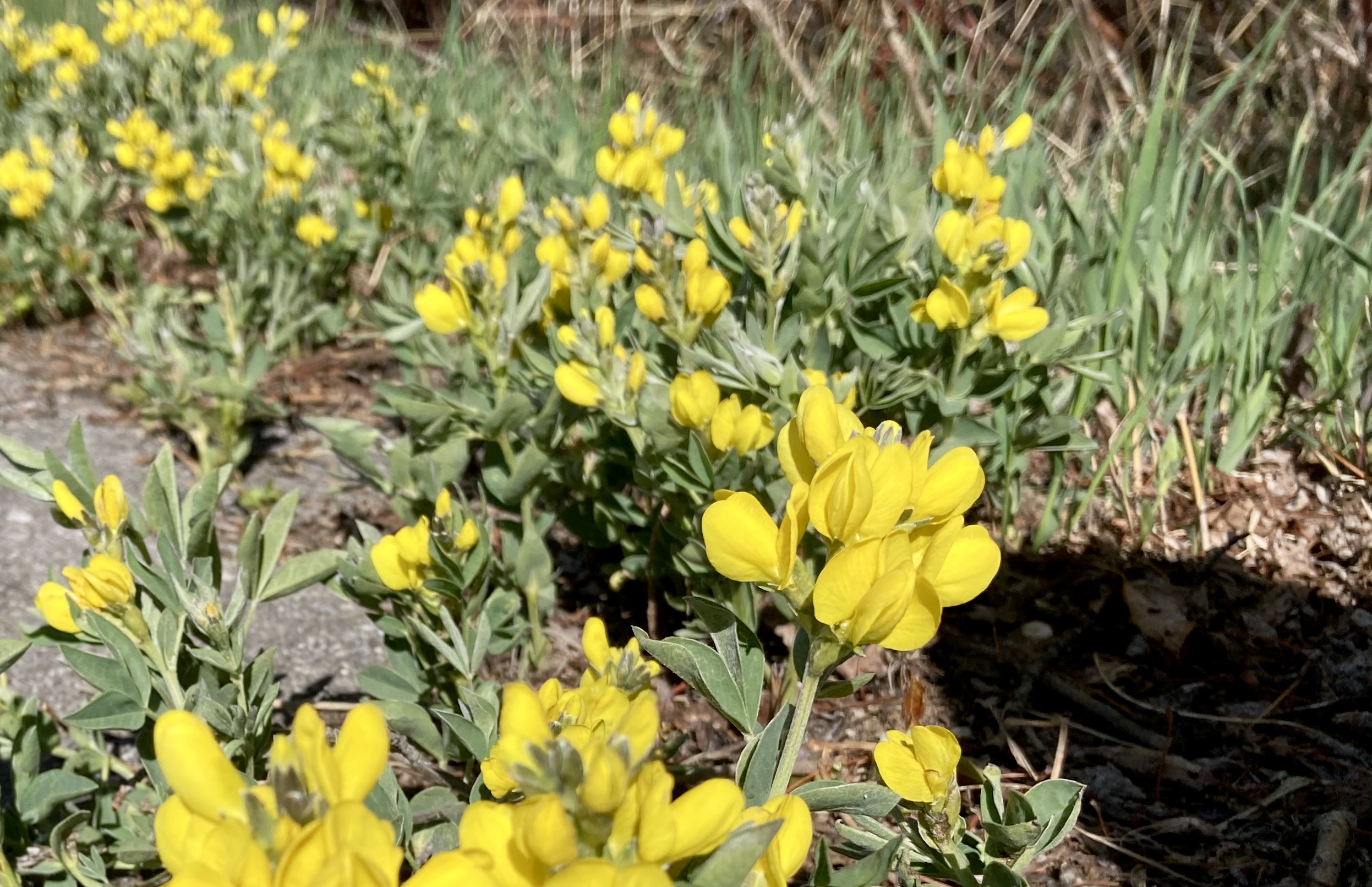
So now I extend the invitation to you. Try it out in your own neighbourhood and find out what the world is waiting to tell you. Then offer this gift to your students. I can’t promise you what will happen, but as my place-bonding mentor and research supervisor Dr. Hilary Leighton says, I can promise you that something will!

